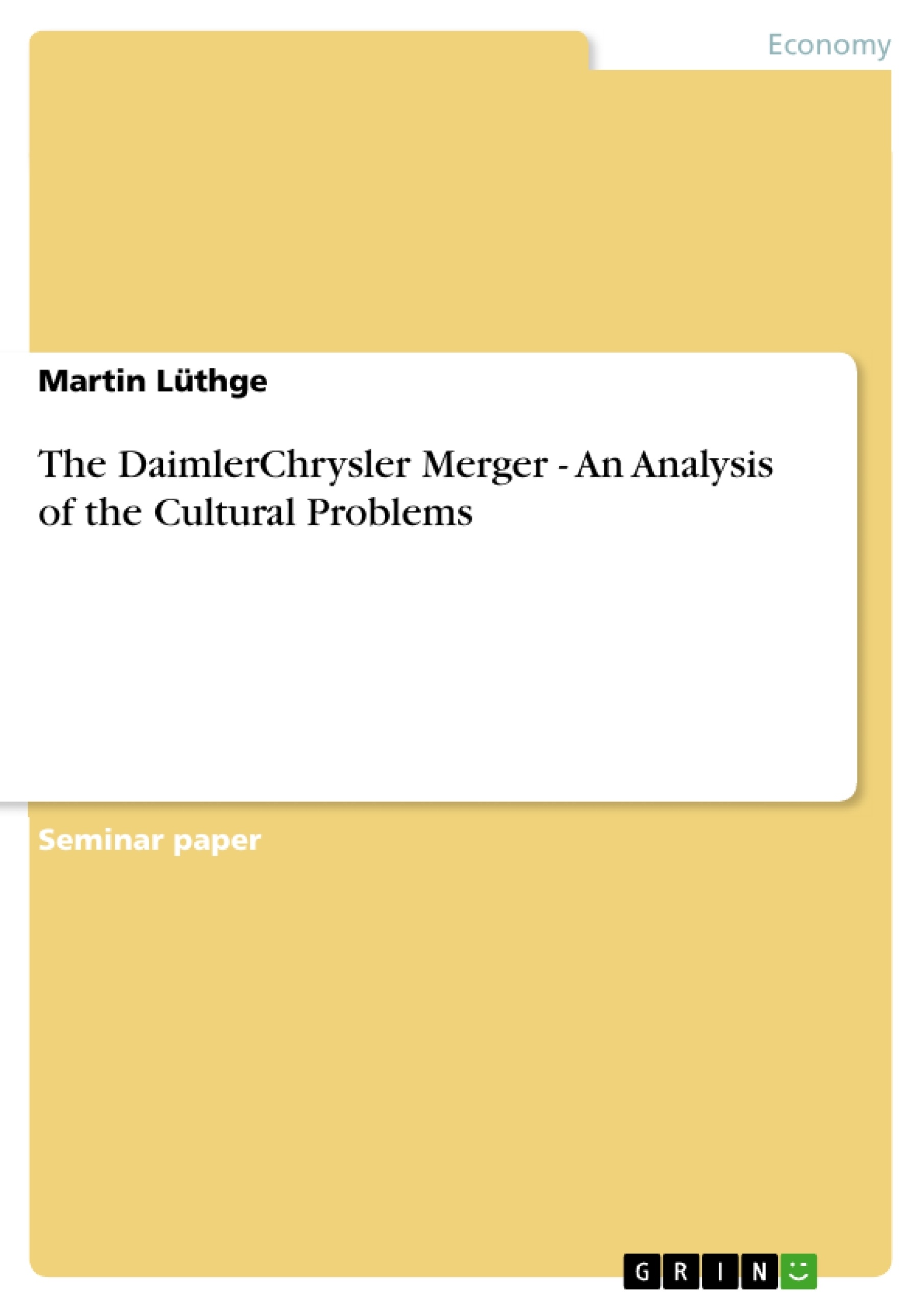Introduction (English)
On 6 May 1998, Daimler-Benz of Germany signed a merger agreement with Chrysler Corporation of the United States. The merger marked the beginning of the ambitious goal of merging two styles of auto-making, two approaches to busine
Table of Contents
- Introduction: Forming the World's Third-largest Automotive Company
- Cultural Differences between Americans and Germans
- Importance of Corporate Culture and Communication across Cultures
- The Cultural Strategy for the Merger
- Accomplishment of the Merger
- Arising Cultural Clashes
- Conclusion and Recommendations
Objectives and Key Themes
This paper analyzes the strategic failures of the DaimlerChrysler merger, particularly focusing on cultural issues, and provides recommendations to address these challenges. It investigates the cultural discrepancies between American and German business practices and explores the impact of corporate culture on international mergers.
- Cultural differences between Americans and Germans
- The importance of corporate culture and communication in cross-cultural mergers
- The cultural strategy employed in the DaimlerChrysler merger
- The impact of cultural clashes on the merger's success
- Recommendations for addressing cultural challenges in international mergers
Chapter Summaries
The first chapter introduces the DaimlerChrysler merger, outlining its historical context and the ambitions driving this significant business combination. It highlights the challenges of merging two distinct corporate cultures and the potential for significant synergies.
Chapter two delves into the cultural differences between Americans and Germans, using established models such as Hofstede and Trompenaars to analyze key differences in their approaches to business and decision-making.
Chapter three examines the importance of corporate culture and communication across cultures, highlighting the challenges posed by differing cultural values and practices in international mergers. It emphasizes the need for cultural sensitivity and effective communication to overcome potential barriers.
Chapter four explores the cultural strategy employed in the DaimlerChrysler merger, analyzing the intended approach to integrating the two companies' distinct cultures. It discusses the potential risks and challenges associated with different acculturation strategies, particularly the risk of assimilation or deculturation.
Chapter five outlines the process of achieving the merger, dividing it into phases of targeting and negotiating. It examines the cultural challenges that emerged during the negotiation stage, highlighting the importance of cultural awareness and understanding in cross-cultural business negotiations.
Keywords
The core concepts of this paper revolve around the themes of international mergers, cross-cultural communication, corporate culture, cultural differences, and strategic failures. The analysis focuses on cultural issues impacting the DaimlerChrysler merger, using established frameworks such as Hofstede's cultural dimensions and Trompenaars' cultural model to understand the dynamics between American and German business cultures. The paper also explores concepts such as acculturation strategies and the role of communication in bridging cultural divides.
- Citar trabajo
- Martin Lüthge (Autor), 2003, The DaimlerChrysler Merger - An Analysis of the Cultural Problems, Múnich, GRIN Verlag, https://www.grin.com/document/185902



